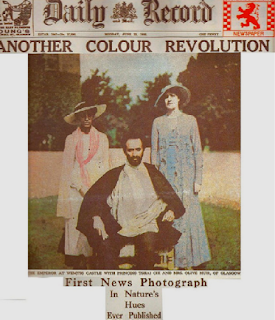The first assessment task for JOUR1111 is to log a personal media use and production diary. Over ten days I recorded all of my media usage and production and then put all the collected data into the table below with totals for each day and platform (in minutes). A lot of the time I was multitasking media usage, so some totals seem impossibly large.
 |
| Table 1 |
From the data I was quite shocked to find how much media I use/produce each day - especially to find that I listened to so much radio. I had never consciously noted how much I actually listened to, because I am always doing something else as well. Comparing this to the answers given in the recent survey of the cohort, we seem to be on a fairly even par.
 |
| Graph 1 |
By taking the averages of what each student said their daily use roughly was, and averaging out how much I used over the week, I created the above graph. The cohort (representing the average student) and I listen to about the same amount of radio each day. This is not even reaching a full hour. From this it could be deduced that today’s generation (excepting any students who are of a more mature age in the cohort) either have little time to listen to radio or we simply don’t absorb information as well by only listening to it.
This reason could explain why, on average, daily television usage was more than double the amount of radio usage.
 |
| Graph 2 |
In comparison to the cohort I’m on average about 5 minutes lower. However, I will watch three hours of TV and then not watch anything for the next three nights. I personally don’t watch much news (and perhaps this is a bad habit). Instead I watch game shows (e.g. Talkin’ ‘Bout Your Generation) and crime shows (e.g. The Mentalist), all of which have been pre-recorded for me. This is why I am able to a large period of shows that interest me. However, this also means that I am not exposed to recent commercials or any other programs that may be aired between the shows I enjoy watching (e.g. news).
One of the main ways I do find out about news is via the internet. The online world is an amazing source of all current news and it’s certainly part of my upbringing. Once again, I have compared the average daily usage of internet between me and the cohort.
 |
| Graph 3 |
I had thought I was always connected to the internet, but the collected data says otherwise. It’s true that I always have the potential to connect to the internet (due to my smartphone), however it isn’t too often that I actually do. The graph above used data from online usage and online research to create my daily usage average. Also included in my online usage was my time spent on Twitter, my blog and YouTube. I chose to keep Facebook separate because I was already aware of how much I used it prior to starting the log.
This can be seen in relation to all other platforms I used in the following graph.
 |
| Graph 4 |
From the graph, it is noted that Facebook is one of the higher usage items. However, mobile phone usage (sending message, calls, and applications), university readings and online use are all substantially higher. My phone usage is understandably high because it is always with me. The mobile phone has become a necessity of day-to-day life. For this reason, I have come to feel at a complete loss without my mobile phone, sending more than one text message per minute.
The only media I produced over the ten days was written media. I enjoy writing leisurely (e.g. poetry, novels, etc.). So the time spent writing includes writing study notes, progress on a novel I’m writing and poetry. It doesn’t include anything that is only brief, only items that took my at least 10 minutes of writing and can be considered as writing.
From the above data it can be seen that we all spend an astonishing amount of time using media, even if we don’t realise it. We’re entering into a new generation of media everywhere, and those who say journalism is a dying form are sorely mistaken.









